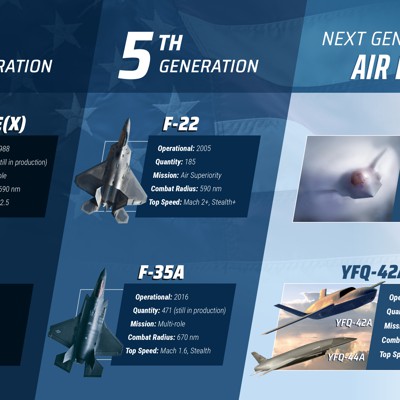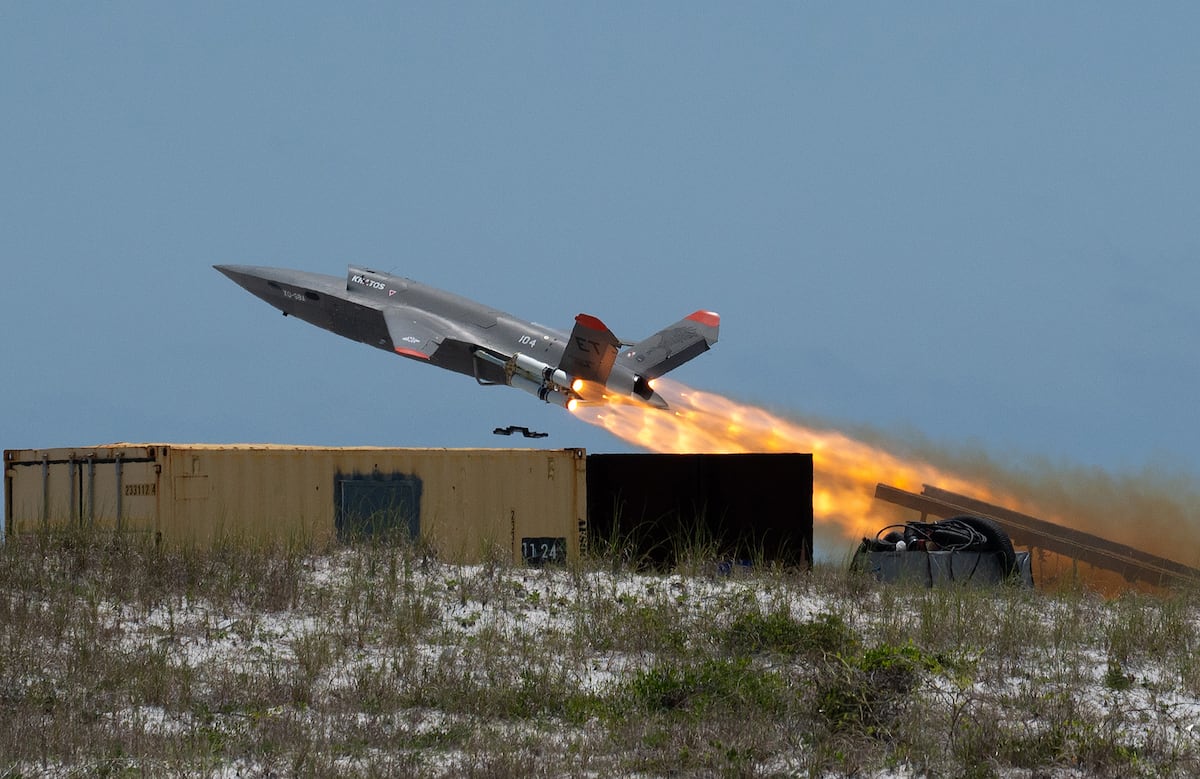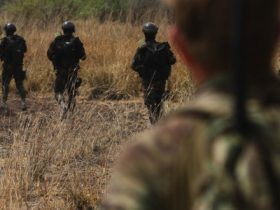The Air Force’s F-47 fighter jet will fly some 70 percent farther without refueling than today’s F-22s, allowing tankers to stay farther from the fray—a key advantage in a potential Pacific conflict.
The planned sixth-generation fighter will have a combat radius of more than 1,000 nautical miles, according to an infographic posted Tuesday on X by Air Force Chief of Staff Gen. David Allvin. Combat radius refers to the distance an aircraft can travel and still have enough fuel to return to its base without refueling.
The infographic pulls back the veil a tiny bit on the highly classified F-47, of which officials have said little more than that it will outperform today’s fifth-generation F-22s and F-35s.
The graphic says the F-47 will fly faster than Mach 2. By comparison, the Raptor has a combat radius of 590 nautical miles and also flies faster than Mach 2. The F-35 has a combat radius of 670 nautical miles and a top speed of Mach 1.6.
The graphic also offers a vague assessment of each jet’s stealth capabilities: the F-47 will have “stealth++” capabilities, while the F-22 has “stealth+” and the F-35 is merely listed as “stealth.”
The F-47 will be operational in “2025 to 2029,” according to the graphic, but the service has not clarified whether that means first flight, initial operating capability, or something else. Air Force officials have previously said the new jet would fly before the end of Trump’s administration in 2029.
The infographic also says the service intends to buy “185+” F-47s, which would match or surpass the number of F-22s purchased before the wildly-over-budget program was truncated. Allvin said at the jet’s rollout in March that it would “cost less” than the F-22 and be acquired in larger numbers.
The service also disclosed new details about its future robot wingmen, called Collaborative Combat Aircraft, meant to fly alongside the F-47, F-35, and F-22. CCAs will have a combat radius of “700+” nautical miles and have some stealth attributes, but listed the top speed as classified.
The CCA program will also become operational in 2025 to 2029, according to the graphic. The two offerings—General Atomics’ YFQ-42A and Anduril’s YFQ-44A—are slated to fly their test aircraft this year.
Read the full article here








Leave a Reply